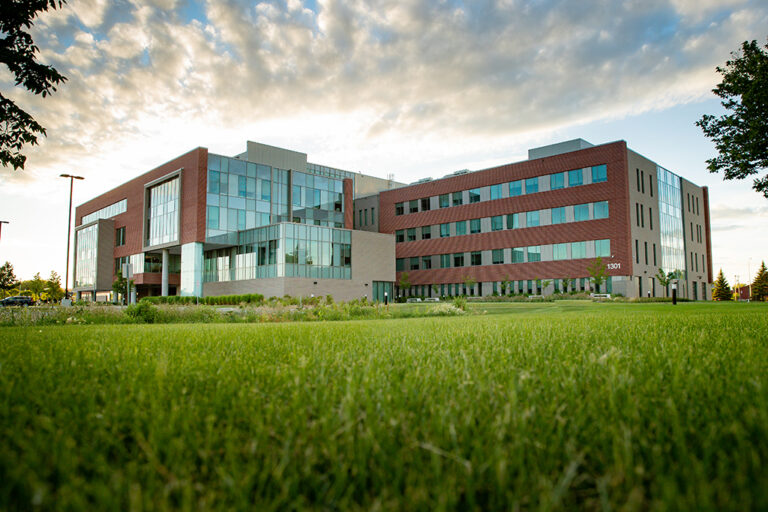From the Dean: COVID and the challenge of evidence-based science
A just-published article in the highly regarded journal Annals of Internal Medicine raises an important issue related to health science student education. I hesitate somewhat to bring it up because the report relates to the treatment of COVID, and we all are suffering from COVID fatigue and are tired talking (and hearing) about it. That said, I think the issue is important enough to the education (and especially the continuing education) of individuals who work in the healthcare delivery space that I hope you’ll bear with me as I unfold the concepts.
The article explored the well-described rebound phenomenon that has been reported following the treatment of people suffering from COVID with the pill Paxlovid, which is a combination of two anti-viral medications manufactured by the Pfizer pharmaceutical company. It is well-accepted that Paxlovid reduces morbidity and mortality following mild to moderate COVID infection, especially in vulnerable adults such as the elderly, those with other medical conditions, and especially those whose immune system is compromised. In this study, the definition of “rebound” was not (as typically used) the reappearance of symptoms after an initial infection with COVID, but rather the reappearance of a significant viral load that could be detected and measured after the initial illness. In fact, the majority of the people in this study who developed rebound after Paxlovid had no rebound-related symptoms. What was striking was that the people who took the medication were about ten times more likely to experience rebound (as defined above) as those who did not (roughly 20 percent vs. 2 percent). As an accompanying editorial explained, there are any number of possible reasons for this finding. Maybe the Paxlovid was given too early in the course of the infection and thus blunted the immune response. Or maybe it wasn’t given for a long enough time (typically five days). Regardless of the speculation, however, the only way to get the answer to this finding is to study the matter further.
And that’s one of the messages that’s especially salient for those of us committed to health education – we need to convey to students not just current knowledge about clinical management but also inculcate an approach that emphasizes continual learning and updating of “best practices” over time. As one saying goes, “I know that half of what I’m teaching my students today will turn out to be wrong in the future; I just don’t know which half!” An example of this from my own field of cardiology is the use of aspirin in the treatment of people at risk of – but without manifest – heart disease. We used to think that aspirin would reduce the risk of morbid events. And so it did – and does. But subsequently we learned that this was at the cost of an increased risk of bleeding. It only was through continued study and evaluation that we arrived at the “truth,” which is that most such patients should not be offered low-dose aspirin.
A practical manifestation of this life-long learning imperative is that in order for physicians (and other practitioners) to renew their state medical licenses, they must show evidence that they have completed a variety of continuing medical education experiences. A second important implication for the educational enterprise is that we need to continue to encourage our students to ask questions and be inquisitive about what we tell them. As I like to remind my students when I’m teaching cardiology, “the only dumb question is the unasked one!”
The final imperative extends well beyond the educational sphere but impacts all of healthcare: we need to rely on science and the scientific method if we want to eventually arrive at the correct answer to clinical questions. Yes, the road there may be winding and have cul-de-sacs. But eventually we will get there if we keep at it, as we did with the aspirin issue. As a poignant example of this, consider the following: because of advances in scientific knowledge (among other advances including lifestyle adjustments by patients), the mortality from heart disease fell by an incredible 30 percent between 2000 and 2010! So advances in science do indeed translate into better health – and longer survival. But we need to continually question – and continually update – our assessment of what is the “best practice” in any given clinical situation.
Finally, I hope you had a chance to celebrate National Rural Health Day, which took place yesterday, and thank the people from all over our state who provide healthcare to our rural citizens (including the North Dakotan who submitted the picture above to the North Dakota Rural Health Association in support of the day). The Center for Rural Health at the SMHS is a vital resource for North Dakota’s rural communities and a national leader in rural health care advocacy and support. And as you know, the School has been a long-standing advocate for rural healthcare workforce augmentation and support. Thanks again to all those involved in sustaining, supporting, and optimizing rural health care delivery in North Dakota and everywhere.
Joshua Wynne, MD, MBA, MPH
Vice President for Health Affairs, UND
Dean, UND School of Medicine & Health Sciences



